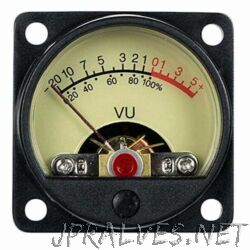Other

“Make Led’s Dance at the Music with a sound sensor and a Arduino UNO Following the Beats of music with Simple code using basic Math.What is a Vu-Meter?If you don’t Know what is a Vu Meter …

A volume unit (VU) meter or standard volume indicator (SVI) is a device displaying a representation of the signal level in audio equipment. The original design was proposed in the 1940 IRE paper, A New Standard Volume Indicator and Reference Level, written by experts from CBS, NBC, and Bell Telephone Laboratories. The Acoustical Society of America then standardized it in 1942 (ANSI C16.5-1942) for use in telephone installation and radio broadcast stations. Consumer audio equipment often features VU meters, both for utility purposes (e.g. in recording equipment) and for aesthetics (in playback devices). The original VU meter is a passive electromechanical device, namely a 200 µA DC d'Arsonval movement ammeter fed from a full-wave copper-oxide rectifier mounted within the meter case. The mass of the needle causes a relatively slow response, which in effect integrates or smooths the signal, with a rise time of 300 ms. This has the effect of averaging out peaks and troughs of short duration, and reflects the perceived loudness of the material more closely than the more modern and initially more expensive PPM meters. For this reason many audio practitioners prefer the VU meter to its alternatives, though the meter indication does not reflect some of the key features of the signal, most notably its peak level, which in many cases, must not pass a defined limit.

“Make Led’s Dance at the Music with a sound sensor and a Arduino UNO Following the Beats of music with Simple code using basic Math.What is a Vu-Meter?If you don’t Know what is a Vu Meter …